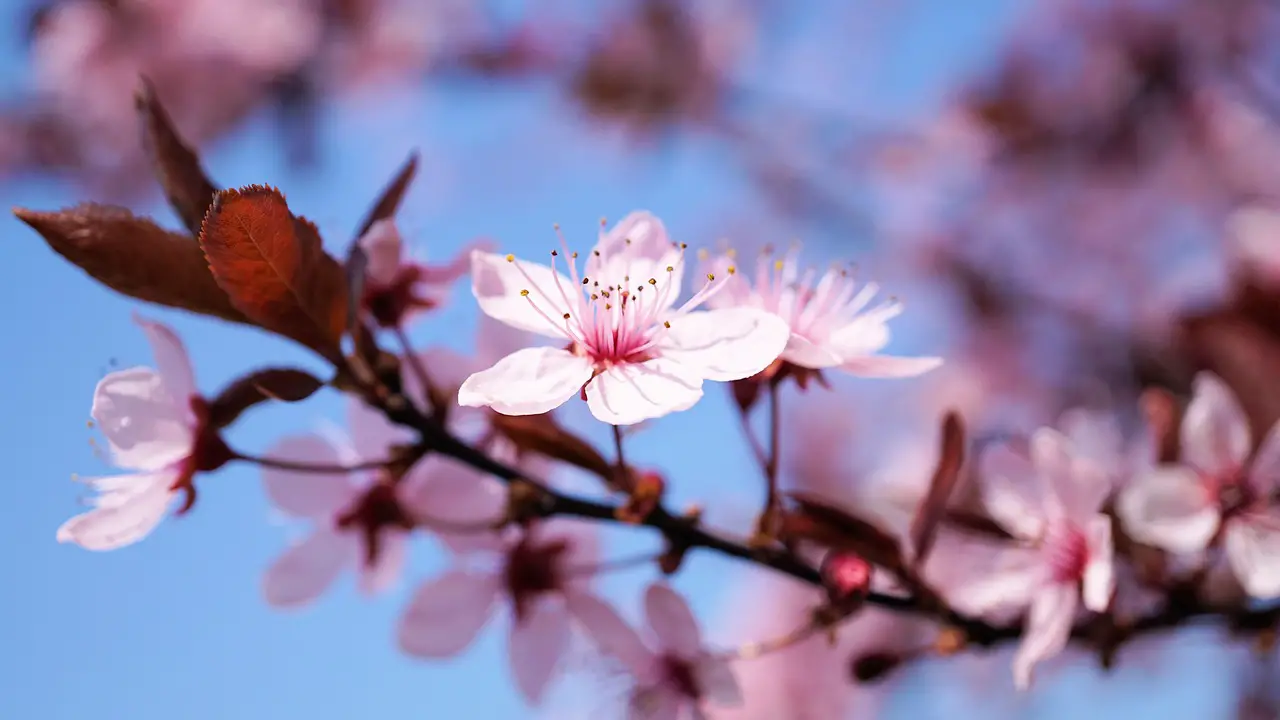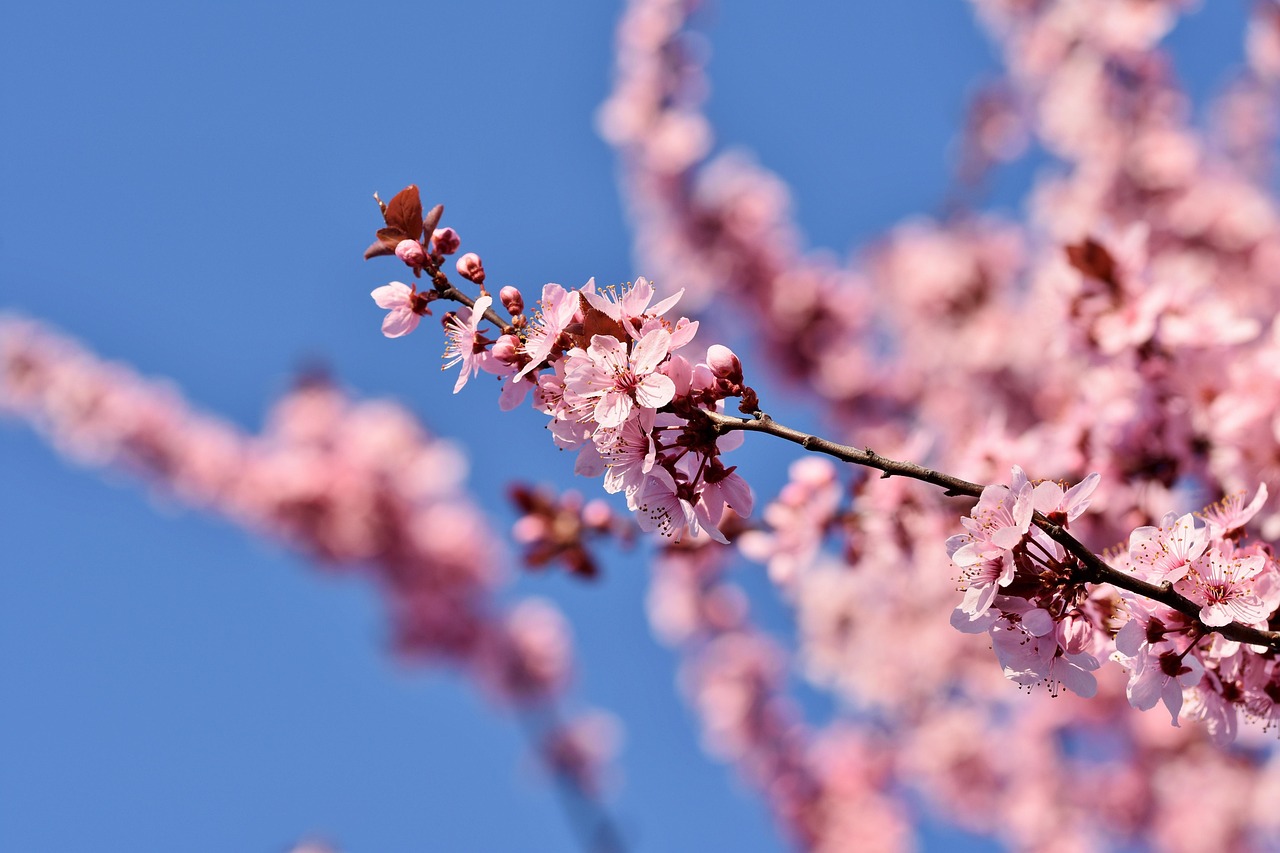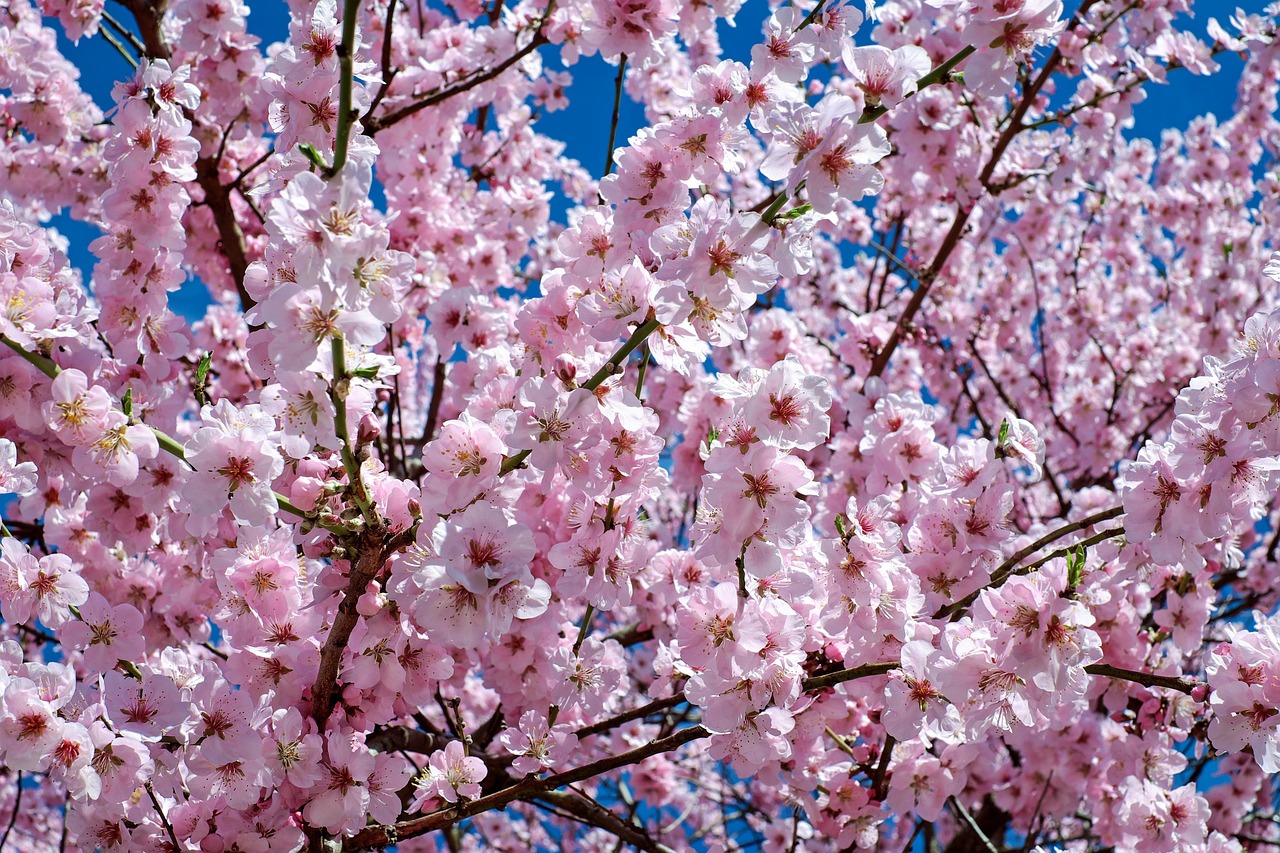To achieve flowering excellence in cherry trees, timely and proper pruning is essential. Focus on removing dead or diseased branches, thinning crowded areas, and shaping the tree for sunlight penetration. Prune during the dormant season for optimal results.
Cherry trees are beloved for their stunning blooms and delicious fruit. Proper pruning not only enhances the aesthetic appeal of these trees but also promotes healthy growth and abundant flowering. By understanding the right techniques and timing, you can ensure that your cherry tree thrives and produces beautiful blossoms each year.

Pruning is a critical aspect of cherry tree care. It involves selectively cutting away branches to encourage growth and improve the overall structure of the tree. When done correctly, pruning can lead to increased air circulation, improved light penetration, and better fruit production. However, improper pruning can lead to stunted growth or even damage the tree.
Understanding Cherry Tree Varieties
Before diving into pruning techniques, it is important to understand the different types of cherry trees. They can be broadly categorized into two main groups: sweet cherries and sour cherries. Each type has unique characteristics that may influence pruning practices.
| Cherry Type | Features | Best Uses |
|---|---|---|
| Sweet Cherries | Large, sweet fruit; often dark in color. | Fresh eating, desserts, cooking. |
| Sour Cherries | Smaller, tart fruit; usually red or yellow. | Pies, jams, baking. |
Each cherry tree variety may require slightly different pruning approaches based on their growth habits and fruiting patterns. Knowing your specific type can help you apply the best practices for pruning.

When to Prune Cherry Trees
The timing of pruning is crucial for the health of cherry trees. Most experts recommend pruning during late winter or early spring when the trees are still dormant but before new growth begins. This timing helps prevent sap loss and minimizes stress on the tree.
However, if you need to remove any dead or diseased wood, it is advisable to do this as soon as you notice the problem, regardless of the season. Early intervention can prevent further damage and promote healing.
Essential Pruning Techniques
Understanding proper pruning techniques is vital for maintaining the health and beauty of your cherry trees. Here are some essential methods to keep in mind:

- Thinning: Remove some branches to allow sunlight and air to penetrate the canopy. This helps reduce disease risks.
- Crown Management: Shape the tree by cutting back branches that grow inward or cross over each other.
- Heading Back: Shorten long branches to encourage bushier growth and more flowers.
- Removing Suckers: Cut away suckers that grow from the base or below the graft line since they do not contribute to fruit production.
Each of these techniques serves a specific purpose in promoting healthy growth and enhancing flowering. It is important to use clean, sharp tools to make precise cuts, which will minimize damage and promote faster healing.
Tools Needed for Pruning
Having the right tools makes a significant difference in your pruning efforts. Here is a list of essential tools you should consider having:
- Bypass Pruners: Ideal for cutting small branches with precision.
- Loppers: Useful for thicker branches that are too large for pruners.
- Saw: Needed for larger cuts that require more power.
- Gloves: Protect your hands from cuts and scratches while working.
- Sealant (optional): Can be applied to larger cuts to prevent disease entry.
Using the right tools not only enhances efficiency but also helps reduce the risk of injury or damage to your trees. Always clean your tools before and after use to prevent the spread of disease.

Avoiding Common Mistakes
Pruning can be intimidating, especially for beginners. However, avoiding common mistakes can lead to better outcomes:
- Avoid heavy pruning in one season; instead, spread it out over several years for gradual improvement.
- Do not remove more than one-third of the tree’s total foliage at once.
- Avoid cutting too close to branches; leave a small collar for healing.
By being mindful of these common pitfalls, you can ensure that your cherry tree remains healthy and productive for many seasons to come.
With these tips in mind, you are well-equipped to begin your cherry tree pruning journey. Understanding your tree’s needs and applying proper techniques will lead to flourishing blooms and bountiful fruit in due time.
Understanding Cherry Tree Growth Patterns
To prune effectively, it is crucial to understand how cherry trees grow. Their growth patterns can influence when and how you should prune. Cherry trees typically exhibit a vigorous growth phase in the spring and summer. This is followed by a period of dormancy in late fall and winter. Knowing this cycle helps in planning your pruning schedule.
Cherry trees generally grow in a predictable manner:
- Spring: New growth appears, and buds begin to swell. This is when flowers bloom, leading to fruit development.
- Summer: The tree continues to grow, focusing on leaf production and fruit ripening. Pruning during this time can stress the tree.
- Fall: Growth slows down as the tree prepares for winter. Leaves change color and drop, revealing the structure of the tree.
- Winter: The tree is dormant, making it the ideal time for pruning without disrupting growth.
Understanding these phases allows you to prune effectively without interfering with the tree’s natural growth processes. Aim to prune when the tree is dormant for optimal results.
Types of Cuts for Pruning Cherry Trees
When pruning cherry trees, it is important to know the different types of cuts you can make. Each cut serves a specific purpose, whether for shaping or maintaining health. Here are the primary types of cuts:
- Heading Cuts: These cuts shorten a branch or stem, promoting bushier growth. Use heading cuts to encourage lateral branches and increase flowering.
- Thinning Cuts: Thinning involves removing entire branches at their point of origin. This helps improve air circulation and light penetration within the canopy.
- Removal Cuts: Use these to remove dead, damaged, or diseased branches completely. This promotes overall health and prevents the spread of diseases.
Each cut type is vital for achieving a well-balanced tree structure and encouraging healthy growth. Using the appropriate cut will ensure that your cherry tree develops properly and produces abundant blossoms.
Creating a Pruning Plan
A pruning plan helps you stay organized and focused on your tree care goals. Start by assessing your cherry tree’s current condition and structure. Here are some steps to create an effective pruning plan:
- Assess Tree Health: Look for signs of disease, dead wood, or overcrowded branches.
- Determine Goals: Decide if you want to focus on shaping the tree, increasing fruit yield, or enhancing flowering.
- Select Timing: Choose the right time of year for pruning based on your assessment and goals.
- Create a Schedule: Establish a timeline for regular maintenance pruning throughout the year.
Having a clear plan allows you to approach pruning methodically. It also helps track changes in your tree over time, ensuring it remains healthy and productive.
Post-Pruning Care for Cherry Trees
After pruning, providing proper care is essential to support recovery and promote healthy growth. Here are some post-pruning care tips:
- Watering: Ensure your tree receives adequate water after pruning. This helps with recovery and stimulates new growth.
- Mulching: Apply mulch around the base of the tree to retain moisture and suppress weeds.
- Fertilizing: Consider applying a balanced fertilizer in early spring to support new growth. Be cautious not to over-fertilize.
- Pest Control: Monitor for pests and diseases that may take advantage of the tree’s stress after pruning.
These steps will help ensure that your cherry tree thrives after pruning. Proper care can enhance flowering and fruiting in subsequent seasons.
Recognizing Signs of Stress in Cherry Trees
It is important to recognize when your cherry tree may be experiencing stress following pruning or due to environmental factors. Common signs include:
- Pale Leaves: Indicates insufficient nutrients or water.
- Dropping Leaves: May signify stress from over-pruning or lack of water.
- Wilting Branches: This can indicate disease or pest infestations.
- Slow Growth: An indication that the tree is struggling to recover.
If you notice any of these signs, take immediate action. Assess water levels, check for pests, and consider consulting an arborist if necessary. Addressing issues promptly can help restore your cherry tree’s health.
The Role of Weather in Pruning Success
The weather can significantly affect the success of your pruning efforts. Factors such as temperature, humidity, and rainfall play important roles:
- Temperature: Pruning during mild temperatures reduces stress on the tree compared to extreme cold or heat.
- Humidity: Dry conditions post-pruning can lead to faster healing, while high humidity might encourage disease.
- Rainfall: Avoid pruning just before heavy rain, as this can wash away protective treatments or cause soil erosion around roots.
A careful assessment of weather conditions will help you choose the best time for pruning your cherry trees. Optimal conditions promote healing and encourage healthy growth.
Understanding Different Pruning Styles
There are various pruning styles that can be applied to cherry trees, each with its own advantages and intended outcomes. Selecting the right style can enhance the health and flowering of your tree. Here are some common pruning styles:
- Open Center Pruning: This style encourages a vase-like shape. It allows sunlight to penetrate the center of the tree, promoting even growth and good air circulation.
- Central Leader Pruning: This method maintains a single central trunk with several tiers of branches. It is ideal for promoting height and strength in the tree structure.
- Espalier Pruning: This involves training the tree to grow flat against a wall or trellis. Espalier can save space and create a unique aesthetic while still allowing for fruit production.
Choosing the right pruning style depends on your available space, aesthetic preferences, and the type of cherry tree you have. Each style promotes different growth patterns and flowering potential.
Seasonal Care After Pruning
After pruning your cherry tree, seasonal care becomes crucial for supporting recovery and ensuring optimal growth. Different seasons require different care approaches:
Spring Care
During spring, the tree begins to wake from dormancy. Here are care tips for spring:
- Monitor Growth: Watch for new buds and signs of healthy growth. Regularly inspect for pests or diseases.
- Watering: As temperatures rise, ensure that the tree receives enough water, especially if rainfall is sparse.
- Fertilization: Apply a balanced fertilizer to support new leaf and flower development.
Summer Care
In summer, your cherry tree will be in full growth mode. Focus on the following:
- Pest Control: Keep an eye out for pests such as aphids or spider mites. Use organic pesticides when necessary.
- Watering Needs: Increase watering frequency during dry spells to prevent stress on the tree.
- Weed Management: Regularly remove weeds that compete for nutrients and water.
Fall Care
As fall approaches, prepare your cherry tree for winter:
- Final Watering: Ensure deep watering before the ground freezes to help roots store moisture.
- Mulching: Apply mulch around the base to protect roots from freezing temperatures and suppress weeds.
- Pest Inspection: Check for any lingering pests or diseases that may have developed during the growing season.
Winter Care
During winter, the focus shifts to protecting the tree:
- Snow Removal: Gently remove heavy snow accumulation from branches to prevent breakage.
- Wrapping Young Trees: Consider wrapping young trees with burlap or protective materials to shield them from harsh winds and frost.
The Importance of Soil Health
The health of your cherry tree is closely linked to soil quality. Healthy soil provides essential nutrients and supports root development. Here are some ways to maintain optimal soil health:
- Soil Testing: Conduct a soil test to determine pH levels and nutrient deficiencies. Most cherry trees thrive in slightly acidic to neutral soil (pH 6.0-7.0).
- Add Organic Matter: Incorporate compost or well-rotted manure into the soil to improve nutrient availability and structure.
- Avoid Compaction: Prevent soil compaction around the roots by avoiding heavy foot traffic in the area around the tree.
Maintaining healthy soil not only benefits your cherry tree but also enhances its resilience against pests and diseases.
Pest and Disease Management
Pests and diseases can significantly impact cherry trees if not managed effectively. Being proactive in identifying and treating issues is essential. Common pests include:
- Aphids: Small insects that suck sap, causing leaves to curl and yellow. Control with insecticidal soap or natural predators like ladybugs.
- Caterpillars: Larvae of moths can defoliate trees. Hand-picking or using Bacillus thuringiensis (Bt) can help manage their populations.
- Cherry Fruit Fly: This pest lays eggs in fruit, causing it to rot. Use traps to monitor and control their numbers.
Diseases such as brown rot and powdery mildew can also affect cherry trees. Here are some prevention strategies:
- Good Hygiene: Remove fallen fruit and debris that can harbor pathogens.
- Cultural Practices: Ensure proper spacing between trees for good air circulation to reduce humidity around foliage.
- Pesticides: If necessary, apply fungicides during the bloom period for disease prevention.
Being vigilant about pests and diseases can help maintain your cherry tree’s health and ensure vibrant flowering each season.
The Benefits of Professional Consultation
If you are uncertain about pruning techniques or if your cherry tree is experiencing persistent issues, consulting a professional arborist can be beneficial. Here are some advantages of seeking expert help:
- Expert Knowledge: Arborists have specialized knowledge about tree care specific to your region and species.
- Assessment Skills: They can accurately assess tree health, identifying problems that may not be visible to the average homeowner.
- Proper Techniques: Professionals can demonstrate correct pruning techniques, ensuring that your cherry tree receives the best care possible.
A professional consultation can provide peace of mind, especially for those new to cherry tree care or facing challenges beyond their expertise.
Additional Resources for Cherry Tree Care
Knowledge is key when it comes to maintaining healthy cherry trees. There are plenty of resources available for both novice and experienced gardeners. Here are some valuable resources you may consider:
- Books: Look for comprehensive books on fruit tree care that cover various aspects of cherry tree maintenance, including pruning techniques, pest management, and soil health.
- Online Tutorials: Websites like gardening forums, YouTube channels, and university extension services often provide free video tutorials and articles on cherry tree care.
- Local Gardening Clubs: Joining a local gardening club can connect you with experienced gardeners who can share tips and techniques specific to your region.
- Extension Services: Many universities offer extension services that can provide expert advice tailored to local conditions.
By utilizing these resources, you can enhance your understanding of cherry tree care and improve your gardening skills, leading to better outcomes in flowering and fruiting.
Seasonal Workshops and Community Events
Participating in seasonal workshops and community events can also be beneficial. These gatherings often provide hands-on learning opportunities and allow you to interact with experts and fellow enthusiasts. Consider looking for:
- Pruning Demonstrations: Many local nurseries or arboretums host events where you can learn proper pruning techniques in real time.
- Pest Management Workshops: These sessions can help you understand common pests and diseases affecting cherry trees and how to manage them effectively.
- Planting Days: Community planting events can provide insights into choosing the right varieties for your area.
Engaging with your community not only enriches your gardening knowledge but also fosters connections with like-minded individuals who share your passion for cherry tree cultivation.
The Long-Term Benefits of Pruning
While pruning may seem like a daunting task, the long-term benefits are significant. An appropriately pruned cherry tree will:
- Produce More Fruit: Effective pruning encourages better fruit production by allowing sunlight to reach more branches.
- Enhance Aesthetics: A well-pruned tree has a more attractive shape and encourages a beautiful display of flowers in spring.
- Improve Tree Health: Regular maintenance through pruning helps prevent diseases and encourages vigorous growth.
- Extend Lifespan: Healthy trees are more resilient and can live longer with proper care.
Investing time in learning about and performing proper pruning techniques will pay dividends in the form of healthy, productive cherry trees.
Final Thoughts
Caring for cherry trees through effective pruning is essential for achieving flowering excellence. By understanding the growth patterns, employing the right techniques, and providing seasonal care, you can ensure your trees thrive year after year. Remember that each cherry tree is unique, so take the time to assess its specific needs.
Utilizing available resources, participating in community events, and considering professional consultation when necessary can further enhance your gardening efforts. The journey of nurturing cherry trees is rewarding as you witness their transformation through the seasons, culminating in beautiful blossoms and delicious fruit.
The art of pruning not only supports the health of your trees but also enriches your gardening experience. With dedication and the right knowledge, your cherry trees will flourish, creating stunning displays that bring joy to your garden and home.
Embrace the process, stay informed, and enjoy every moment spent cultivating your cherry trees. Your efforts will lead to flourishing blooms and delicious fruits that can be enjoyed for many seasons to come.
